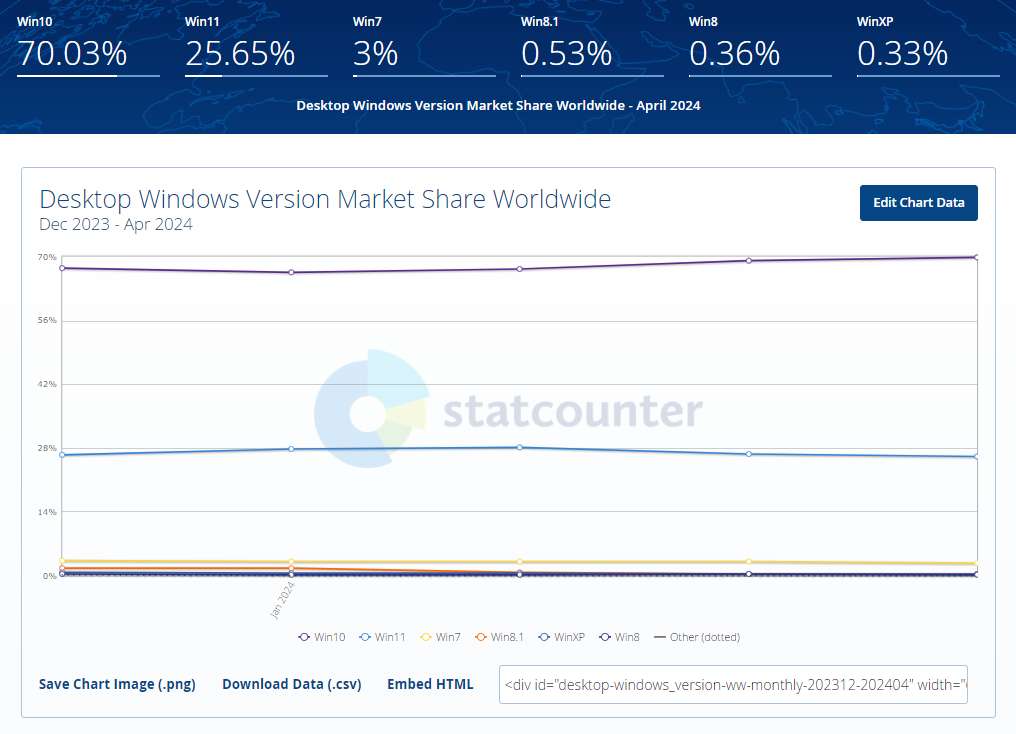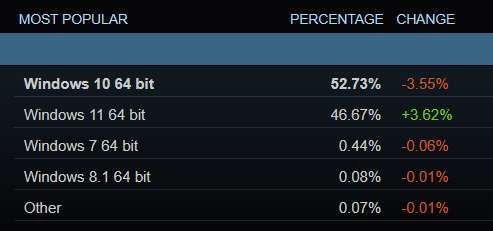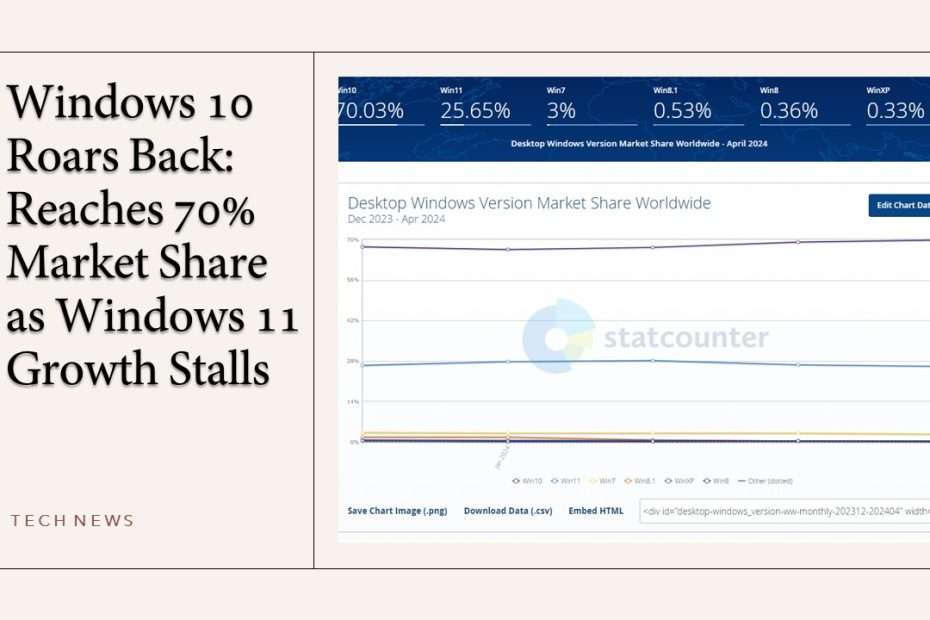Windows 11 has struggled to gain traction, failing to reach 30% adoption among Windows systems worldwide after two and a half years of general availability, according to Statcounter’s data. Despite a slight improvement in the Steam survey, the OS has entered its second month of market share decline on Statcounter’s global chart, slipping to around 25% adoption among Windows users.

In contrast, Windows 10 has rebounded, climbing back up to 70% market share. Microsoft’s newest OS, Windows 11, had shown slow but steady growth from its October 2021 launch, peaking at 28.16% in February, but has since declined by around 2.5%, indicating a significant slowdown in adoption.
Windows 11’s slow adoption rate may be attributed to its stringent CPU requirements, which have been a topic of controversy. The upcoming major update, Version 24H2, scheduled for release later this year, is expected to further exacerbate the issue. This update will introduce even more stringent requirements, mandating processors with POPCNT and SSE4.2 instructions.
This move is likely to exclude many older CPUs, potentially disenfranchising a significant number of users. The updated requirements may limit the upgrade options for those with older hardware, potentially widening the gap between Windows 11 and its predecessor, Windows 10, which has seen a resurgence in popularity. This development may further slow down Windows 11’s adoption, making it an even more challenging task for Microsoft to convince users to upgrade.
The Windows 11 24H2 update is expected to bring numerous AI features, including an advanced Copilot AI assistant that may utilize Neural Processing Units (NPUs) to reduce dependence on cloud servers. This update will also introduce support for Wi-Fi 7, as confirmed by the company.
Microsoft’s decision to introduce Start menu ads in Windows 11 may further diminish user satisfaction. An optional update, currently available, adds a new section to the Start menu, showcasing app recommendations from select developers featured on the Microsoft Store. This move has sparked concerns among users, who may view this as an intrusive marketing tactic.
The inclusion of ads in the Start menu may be seen as a disruption to the user experience, potentially leading to frustration and dissatisfaction. While the update is optional, users may feel pressured to install it, potentially exposing them to unwanted marketing content. This development raises questions about Microsoft’s approach to user experience and its reliance on advertising revenue.
Windows 11 is gaining popularity on gaming PCs, according to the April 2024 Steam survey, where it may soon become the most widely used operating system. After holding steady at 41% in February and March, Windows 11 jumped to 45% in April, while Windows 10 dropped to 51%. This growth indicates a shift towards Windows 11 among gamers.

Despite Windows 11’s growth, Windows 10 remains dominant due to its continued support and compatibility with most games and programs. Although Windows 11 offers some exclusive features, particularly related to HDR and AI, Windows 10 still receives mainstream support from Microsoft until next fall. Additionally, certain editions of Windows 10 will reach end-of-life status in June 2024 and October 2025, requiring a subscription to the Long-Term Servicing Channel for further updates.
Maybe you liked other interesting articles?

